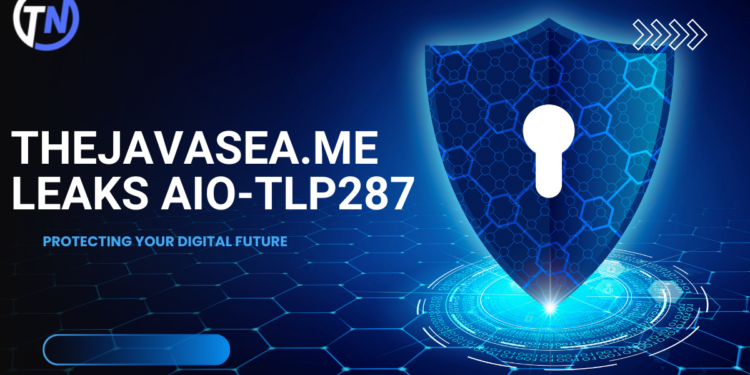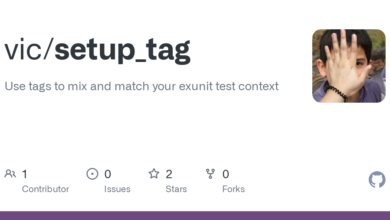Understanding thejavasea.me Leaks AIO-TLP287: What You Need to Know

Introduction to thejavasea.me Leaks AIO-TLP287
The recent emergence of thejavasea.me leaks aio-tlp287 has captured the attention of both the cybersecurity community and the general public. This term refers to a significant data breach involving sensitive information that has implications for various sectors, including personal privacy, corporate security, and national interests. As digital interactions grow, the exposure of private data raises concerns about the integrity of online platforms and the safety of personal and financial information.
The leaks associated with thejavasea.me have been characterized by the extensive amount of compromised personal data which includes usernames, passwords, email addresses, and other identifiable information of users across multiple services. This incident emphasizes the increasing challenges faced by organizations in safeguarding their data against intrusion, and highlights the importance of robust cybersecurity measures. Furthermore, the frequency of such data breaches calls for a reevaluation of existing policies and practices surrounding data protection and user privacy.
As we delve deeper into the implications and context of thejavasea.me leaks aio-tlp287, it is imperative to evaluate the measures that can be adopted in response to such incidents, thereby fostering a safer online environment for all users.
What is thejavasea.me?
Thejavasea.me is an online platform that has garnered attention for its diverse range of content and services. Primarily, the website functions as a hub for users interested in accessing an array of digital resources, which include entertainment, tutorials, and various forms of multimedia. The site is designed to cater to a wide audience, with a specific focus on individuals seeking to enhance their knowledge and skills in a variety of fields, particularly in technology and lifestyle.
One of the main features of thejavasea.me is its emphasis on providing access to downloads and educational materials. Users frequent the site looking for refined content that is informative as well as entertaining. The platform is characterized by its user-friendly interface, enabling visitors to easily navigate through different categories, ensuring their needs are met with efficiency. This accessibility appeals to a broad demographic that ranges from casual users to more dedicated individuals seeking in-depth knowledge.
The type of content typically found on thejavasea.me includes articles, instructional videos, and downloadable resources that cover a wide variety of topics. This makes it an attractive option for users who are keen on self-improvement and digital literacy. Additionally, the platform often features community interactions that promote active engagement among users, fostering a sense of collaboration and shared learning. As the website continues to evolve, it remains a relevant topic of discussion due to its offerings and the valuable insights it provides to its audience regarding the world around them.
Overview of the AIO-TLP287 Leak
The aio-tlp287 leak, which has generated considerable attention, involves the unauthorized release of sensitive data from thejavasea.me, a platform known for its wide array of information resources. This leak reportedly encompasses a trove of user information, including usernames, email addresses, and hashed passwords, potentially affecting numerous users. The gravity of this situation lies in the potential for this data to be exploited for malicious purposes, such as identity theft and phishing attacks.
The data breach was made possible through a combination of sophisticated cyber attacks and weak security measures that may have existed on the platform. Hackers often use various techniques, including social engineering and exploiting vulnerabilities within coding frameworks, to gain access to secured databases. In this instance, it appears that a particular vulnerability was leveraged, allowing attackers to extract vast amounts of sensitive user data effectively and stealthily. Such breaches often serve as a stark reminder of the fragility of online security and the ongoing need for robust safeguards.
What sets the aio-tlp287 leak apart from previous incidents is the scale and the depth of the information leaked. With significant user data involved, this leak poses a serious risk not only to individual users but also to the integrity of the platform itself. The repercussions can extend globally, affecting companies and personal accounts across various sectors. Additionally, with the increasing interconnectedness of online identities, the implications of thejavasea.me leaks aio-tlp287 may resonate throughout the digital community, prompting further scrutiny and action concerning user privacy and data protection.
The Impact of thejavasea.me Leaks AIO-TLP287
The leaks associated with thejavasea.me, specifically AIO-TLP287, have far-reaching implications for individuals, companies, and the broader internet community. As sensitive data comes to light, the immediate impact is felt most acutely by those whose personal information has been compromised. Individuals may face risks such as identity theft, financial fraud, and breaches of privacy; these vulnerabilities can lead to significant emotional distress and financial repercussions. It is essential for individuals to monitor their financial statements and be vigilant about unusual activities that may arise as a consequence of these leaks.
On a corporate level, companies that have been implicated or have user data exposed through thejavasea.me leaks may face severe legal and financial repercussions. The exposure of proprietary information can weaken competitive advantages, while also resulting in loss of customer trust; this could significantly impact their market position. Moreover, organizations may have to deal with legal actions from affected individuals or governmental bodies, leading to hefty fines. The compliance landscape surrounding data protection laws is rigorous, and failure to adhere to these regulations can exacerbate financial losses and reputational damage for companies involved.
The broader internet community is also affected by leaks such as AIO-TLP287. Such events can lead to a pervasive atmosphere of distrust in online services, prompting users to reconsider the security measures employed by various platforms. As a result, the need for robust cybersecurity practices, like stronger encryption and better data handling protocols, becomes even more pressing. Moreover, these leaks may lead to regulatory changes aimed at improving data protection, influencing how companies manage and safeguard user information in the future. Overall, the repercussions of thejavasea.me leaks AIO-TLP287 are both profound and multifaceted, highlighting the need for vigilance and proactive measures across all sectors.
Reactions from the Community
The leaks associated with thejavasea.me, specifically the aio-tlp287, have elicited a broad spectrum of reactions from various stakeholders including users, industry experts, and privacy advocates. Many users expressed considerable concern over the implications of these leaks on personal security and data integrity. The immediate reaction from some individuals was one of shock, particularly those who discovered their personal information was included in the leaked data. Numerous discussions surfaced across social media platforms, where users shared their experiences and fears regarding potential identity theft and unauthorized access to their accounts.
On the other hand, industry experts have taken a more analytical approach to the situation. Some have pointed out the failures in data protection practices that led to the leaks in the first place, calling for more stringent security measures. Expert commentary frequently emphasizes the importance of transparency from organizations dealing with sensitive data and the need for robust cybersecurity frameworks. Furthermore, professionals within the cybersecurity industry have highlighted the necessity for individuals to educate themselves on recognizing and mitigating risks associated with such data breaches.
Privacy advocates have also weighed in, emphasizing the potential for long-term consequences arising from the泄漏. Concerns surrounding user privacy and ethical management of personal data have taken center stage in public discussions. Many advocate for stronger legislative actions aimed at protecting consumer data and ensuring entities are held accountable for lapses in data security. The leaks have heightened awareness around data privacy rights, leading to calls for public policy reforms that safeguard individual freedoms in the digital space.
The responses from these groups illustrate the complexity of the situation associated with thejavasea.me leaks aio-tlp287 and highlight the urgent need for collective action to enhance data security protocols and user awareness. As the discourse continues to evolve, it remains crucial for all stakeholders to engage in constructive conversations regarding the management of sensitive information in today’s digital landscape.
Preventing Future Leaks: Best Practices
As organizations increasingly rely on digital platforms, the need for robust data protection strategies becomes paramount. One key aspect in preventing future leaks, such as those associated with thejavasea.me leaks aio-tlp287, is implementing a comprehensive data protection policy. This includes identifying sensitive data, classifying it appropriately, and establishing access controls. Organizations should ensure that only authorized personnel can access critical information, thereby reducing the risk of exposure.
Cybersecurity measures are essential for safeguarding data integrity. Regular updates and patches to software and systems help close security vulnerabilities that could otherwise be exploited. Employing firewalls and encryption for sensitive data transmission are also effective strategies in combating potential breaches. Additionally, organizations should consider adopting multi-factor authentication (MFA) to add an extra layer of security when accessing their systems, making unauthorized access significantly more challenging.
Employee awareness is a crucial element in preventing data leaks. It is beneficial for organizations to conduct regular training sessions that educate staff about cybersecurity risks, emphasizing the potential consequences of their actions. Employees should be made aware of the latest phishing techniques and how to recognize suspicious emails or communications. By fostering a culture of security mindfulness, organizations empower their personnel to be vigilant and proactive in protecting sensitive information.
Furthermore, regular audits and assessments of data security practices can help organizations identify weaknesses before they can be exploited. By being proactive and vigilant regarding their data protection strategies, organizations can effectively mitigate the risks associated with leaks like thejavasea.me leaks aio-tlp287. Establishing clear protocols for responding to any potential breaches is also vital. Quick and efficient responses can significantly reduce the impact of any leak incidents.
Legislative and Regulatory Responses
The recent leaks associated with thejavasea.me leaks aio-tlp287 have prompted significant legislative and regulatory scrutiny at both national and international levels. In the wake of such data breaches, many governments are recognizing the need to strengthen data privacy laws and enhance regulations surrounding data protection. Countries are reassessing their current frameworks to ensure they effectively detain and deter such incidents in the future.
For instance, following the leaks, several governments have begun proposals to revise existing data protection laws. Initiatives may include enforcing stricter penalties for businesses that fail to secure sensitive information or implement necessary preventive measures. This reactive approach aims to hold entities accountable for the safeguarding of user data, particularly data that falls within the purview of thejavasea.me leaks aio-tlp287.
Moreover, regulatory bodies are reviewing compliance protocols to ensure they align with the latest threats posed by data breaches. Enhanced audits and compliance checks are becoming standard practice to preemptively identify vulnerabilities within organizations’ data management systems. Furthermore, a collaborative approach is emerging, as governments are coordinating with data protection agencies and security firms to create a cohesive strategy against future leaks.
At the international level, discussions are underway to develop global standards for data protection that can address issues posed by leaks similar to those seen with thejavasea.me leaks aio-tlp287. This includes considerations for cross-border data flows and the responsibilities of companies operating across various jurisdictions. Such international dialogues highlight an urgent need for a unified response to combat the increasing frequency and severity of data breaches, cementing the importance of regulatory flexibility in adapting to the rapidly evolving digital landscape.
The Role of Technology in Data Leaks
Technology plays a pivotal role in the dynamics surrounding data leaks, with both facilitating and preventing them. Understanding these dual roles is essential, especially in the context of recent events such as thejavasea.me leaks aio-tlp287. Many data breaches stem from technological vulnerabilities, which include inadequately secured systems and outdated software. Cybercriminals frequently exploit these weaknesses to access sensitive data, highlighting the importance of robust data management systems that prioritize security.
Encryption stands out as a critical technology in the fight against data leaks. By encoding information, encryption helps ensure that even if data is intercepted or accessed improperly, it remains unreadable without the appropriate decryption key. This technology has become increasingly sophisticated, offering varying levels of encryption standards to suit different needs. However, its effectiveness relies not only on the technology itself but also on the proper implementation and management practices surrounding it. Inadequate integration of encryption protocols can lead to vulnerabilities that attackers may exploit, rendering efforts futile.
Moreover, the rapid evolution of technology necessitates regular updates to security protocols and systems to counter emerging threats. Automated systems and artificial intelligence can assist in proactive measures for identifying potential vulnerabilities or breaches. However, they are not foolproof and require constant monitoring and human intervention to optimize their effectiveness. In addition, organizations must ensure that their employees are well-trained in cybersecurity practices, as human error remains one of the leading causes of data leaks.
Ultimately, while technology can both increase the risks of data leaks and provide the necessary defenses against them, the effectiveness of these systems relies heavily on comprehensive security strategies that integrate advanced technologies, employee training, and vigilant management practices.
Conclusion: Lessons Learned from thejavasea.me Leaks AIO-TLP287
The recent incident involving thejavasea.me leaks AIO-TLP287 has highlighted several critical lessons regarding data security and the broader implications of such breaches. As organizations increasingly rely on digital platforms for storing sensitive information, understanding the risks and implementing effective security measures is paramount. The leaks serve as a stark reminder of the vulnerabilities that can exist within various digital environments, emphasizing the need for rigorous security protocols and regular monitoring.
One of the key takeaways from thejavasea.me leaks AIO-TLP287 is the significance of robust data encryption. By ensuring that sensitive data is encrypted, organizations can mitigate the risks associated with unauthorized access. This incident reinforces the importance of adopting advanced encryption techniques to protect user data from potential exposure.
Furthermore, the leaks underscore the necessity for regular security audits. Conducting comprehensive assessments of security infrastructures can unveil potential vulnerabilities before they can be exploited. Organizations should prioritize routine evaluations to strengthen their defenses and maintain compliance with the latest security standards.
Another critical lesson involves the need for employee training and awareness programs. Human error remains one of the most common causes of data breaches. By fostering a culture of security awareness, organizations can drastically reduce the likelihood of accidental leaks or negligence that could lead to significant data compromise, as seen in thejavasea.me leaks AIO-TLP287.
In conclusion, the lessons drawn from thejavasea.me leaks AIO-TLP287 can be instrumental in shaping future data security strategies. Emphasizing robust encryption, conducting regular audits, and enhancing employee awareness are essential steps organizations can take to safeguard their data and prevent similar incidents in the future.
You May Also Read This Usatechzone.



